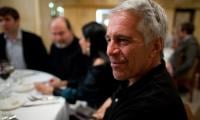LAHORE: Affordability of medicines seems to be a low priority for policymakers in Pakistan, as prices of hundreds of essential and lifesaving medicines have risen sharply in recent months, making them unaffordable for people with low and middle incomes, a senior cardiologist and office-bearer of the Pakistan Cardiac Society (PCS) said.
“Price increases of over 100 percent have been observed in Pakistan. The situation is becoming increasingly difficult for the people because there is no national health insurance, and most healthcare expenses are out-of-pocket,” Prof. Dr. Bilal Mohyuddin, convener of the 53rd Cardiocon 2024, said in his keynote address at the conference’s concluding session.
Prof. Mohyuddin, who served as the executive director of the Punjab Institute of Cardiology until last year, highlighted that the price of the antispasmodic drotaverine had increased by 218%, while many other medications — including antibiotics, common cough syrups, and other essential drugs — had seen similar price hikes of over 100%.
During his talk on “Rational Therapeutics and Interventions: Can We Justify Cost,” Prof. Mohyuddin discussed the Sustainable Development Goal, which emphasizes that everyone has access to quality, affordable treatment. However, he noted that healthcare costs were escalating in Pakistan, especially after the recent deregulation of medicine prices by the outgoing caretaker government.
Prof. Mohyuddin criticized multinational pharmaceutical companies in developed countries for justifying price increases by citing investment in research and development (R&D). Unfortunately, he argued, no such investments were made in Pakistan, where prices of medicines had sharply increased despite a lack of R&D and new solutions.
He further emphasized that the high prices of medicines could not be justified by the R&D spending, as most pharmaceutical companies allocate bulk of their revenue to sales, general, and administrative activities, including marketing, rather than R&D.
“Most new medicines developed between 2009 and 2018 by the 15 leading biopharmaceutical companies offered little or no clinical benefit over existing treatments,” he said, citing a study in the British Medical Journal.
Rising drug prices have also become a critical issue globally, particularly in the United States, Prof. Mohyuddin pointed out. In 2008, newly launched prescription drugs cost around $1,400 annually, but by 2021, that price had surged to $150,000.
“Even older, commonly used drugs, like insulin, have seen significant price hikes, with the cost more than doubling from 2007 to 2018,” he added. Prof. Mohyuddin observed that between 1999 and 2018, 15 largest biopharmaceutical companies amassed $7.7 trillion in revenue, spending $2.2 trillion on administrative activities and $1.4 trillion on R&D. However, these companies often spent more on stock buybacks, which benefit shareholders, than on developing new treatments.
He further pointed out that pharmaceutical and biotech revenues grew from $534 billion in 2006 to $775 billion in 2015, with net profit margins ranging from 12-14%. The industry has also shifted focus from “blockbuster” drugs for common conditions to “nichebuster” drugs for rare diseases, which come with exorbitant price tags.
A notable example is Zolgensma, a gene therapy for spinal muscular atrophy, priced at over $2 million per dose. Similarly, he highlighted the gene therapy for hemophilia B, approved in 2022, which costs $3.5 million per dose, underscoring the increasing price of specialty treatments.
Prof. Mohyuddin stressed the substantial economic impact of high drug prices. For instance, a 12-week treatment for hepatitis C costs up to $95,000, significantly contributing to Medicare’s drug spending. High drug prices are burdening both patients and healthcare systems, raising concerns about the sustainability of such expenditures.
He also noted that the pharmaceutical industry’s market structure often allows manufacturers to set prices without competition, leading to arbitrary pricing. Many high-priced drugs are not linked to their clinical value or effectiveness, attracting criticism from both consumers and governments.
In contrast, Prof. Mohyuddin emphasized the importance of rational therapeutics in cardiology, which combines lifestyle changes, pharmacological treatments, and interventions to improve outcomes. Cost-utility assessments can help prioritize spending on the most effective treatments.
For example, he explained that treatments for cardiovascular diseases (CVD) in Pakistan include costs of around PKR160,000 for single-vessel PCI with drug-eluting stents and PKR250,000 for percutaneous mitral commissurotomy (PTMC), further highlighting the high costs of essential treatments in developing countries.















